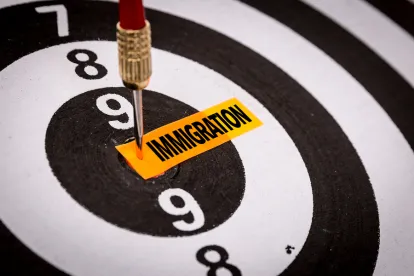It’s 9:30 pm on a Sunday and you just got a call on your cell from U.S. Customs & Border Protection (“CBP”) at LAX. A Vice President from one of your foreign offices has been spending a lot of time here lately developing business leads and strategy. CBP is holding him in secondary inspection and he’s been there for 12 hours. Even though he’s paid overseas, CBP has some questions to ask you to see if he has been “working” here. CBP advises you that they are seriously considering giving him an “expedited removal order” with a 5-year bar on entering the U.S., and putting him on a flight back to Europe tomorrow afternoon. His inability to return to the U.S. would be catastrophic to your business.
The regulations regarding business visitors entering on a B-1 visa or ESTA visa waiver are vague. There is no bright line test for when someone is “working here” versus “having meetings and consultations”. However, there are ways to improve your odds that you will not be flagged and challenged by CBP.
The following conduct will likely trigger CBP’s intervention:
-
Staying more than 3 weeks per visit (even though an ESTA visa waiver visitor is admitted for 90 days and a B-1 visa holder is admitted for 180 days).
-
Leaving the U.S. and returning too soon after the last trip (back-to-back entries). CBP’s interpretation of “too soon” is very fact specific. They look at the totality of the circumstances.
-
Too many trips to the U.S. – “too many” is not defined but is more of a smell test. Again this is fact specific.
-
Having a Facebook or other social media profile that lists you as an employee of a U.S. company.
-
Bringing children to the U.S. on B-1’s at the start of a school year. Children cannot attend public school on a B-1 and should get an F-1 visa before attending private school.
Documents to Carry on the Plane to Prove that One is Merely a Visitor:
-
Proof that one is employed and paid abroad.
-
Foreign business card.
-
Bank statement to show that one has enough funds to cover expenses while in the U.S.
-
Ties to home country (occupying a home, family ties, etc.)
-
Invitation letter from the U.S. host outlining the purpose of the trip.
-
Evidence that the U.S. entity has U.S. workers to do the daily productive work in the foreign national’s area of responsibility.
When Does The Person Need a Work Visa?
While, again, there is no bright line test, a work visa should be seriously considered in the following situations:
-
Spending more than 3 months a year in the aggregate in the U.S.
-
Repeatedly spending more than 1 month at a time in the U.S.
-
Traveling to the U.S. more than 4 times a year and staying for long periods of time on some of those trips.
-
Owning a home in the U.S.
-
The U.S. company has few or no U.S. workers on the payroll to do the daily productive work.
Final Advice
Don’t wait until you receive that Sunday evening phone call from CBP!! Be proactive and minimize your risk. If you have any doubt as to someone’s B-1 eligibility, consult with counsel. Preventive measures on the front end can spare a lot of aggravation and expense on the tail end.




 />i
/>i

